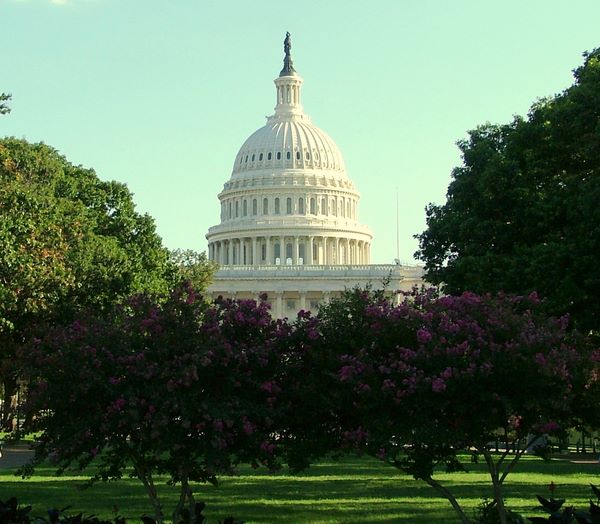|
 Capitol Grounds, Washington, D.C. Posted by:  JimmyEv JimmyEv
N 38° 53.316 W 077° 00.678
18S E 325557 N 4306337
When Congress finally decided to landscape the 59 acres of the Capitol Grounds, they turned to America’s premier landscape architect, Frederick Law Olmsted. Olmsted created the pleasant park-like setting that you see today, including the terraces fronting the Capitol.
Waymark Code: WM2FJA
Location: District of Columbia, United States
Date Posted: 10/25/2007
Views: 220
|
Olmsted began his work at the U.S. Capitol in 1874. It took 18 years to complete. Realizing that the building had been planned to face east at a time when it was assumed Washington’s growth would occur to the east, but that growth had actually occurred on the west side of the building, Olmsted went about correcting the situation. He designed a series of terraces for the west side of the Capitol, each terrace extending to the building itself, creating layers of basements and doubling the space of the Capitol. The terraces not only gave the building more prominence, they balanced the effect of the recently enlarged dome and wings. |

|
Congress changed Olmsted’s plans for the grounds several times, sometimes arbitrarily, sometimes due to budget restraints. He still managed to build a pleasant park-like setting, with the addition of trees, winding paths, fountains, and one Summer House. The trees planted include gifts from 30 states of their ‘state trees.’ Many of the trees on the grounds have other symbolic meaning; most are identified by plaques such as the following dedicated by the Maryland State Society of the Daughters of the American Revolution in 1934:
“Growing on land that was once a part of Maryland, and was, in 1790, her gift to the United States of America, for the national capitol, the 31 trees in this group have been dedicated to our 31 presidents by the 31 chapters of the Maryland D.A.R. as part of the tercentenary celebration of the founding of the states. Soil from Maryland’s historic spots has been placed at the base of each tree.”
In 1910, after Olmsted had finished his work, 161 acres were added to the Capitol Grounds, extending the grounds from the base of Capitol Hill to Union Station. Added to the work of Olmsted was the pre-existing Garfield Statue, the President’s Trees, and the Peace Monument; the international-style Taft Carillon; and the Senate Parking Garage Fountain (bad name for such a beautiful fountain). Soon to be added to the grounds are the Capitol Visitors Center, although it will mostly be located underground to further preserve Olmsted’s work. |

|
Type of Public Space: Campus

Job Number: 02820

Architect: Frederick Olmsted

|
Visit Instructions:
There are no specific visit requirements, however telling about your visit is strongly encouraged. Additional photos of the park to add to the gallery are also nice, but not required. Pictures with a GPS or you in them is highly discouraged.
|